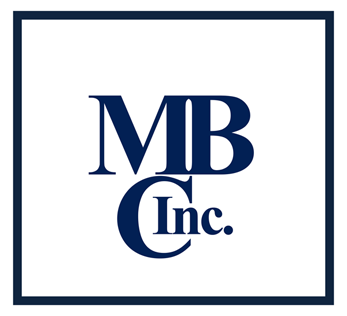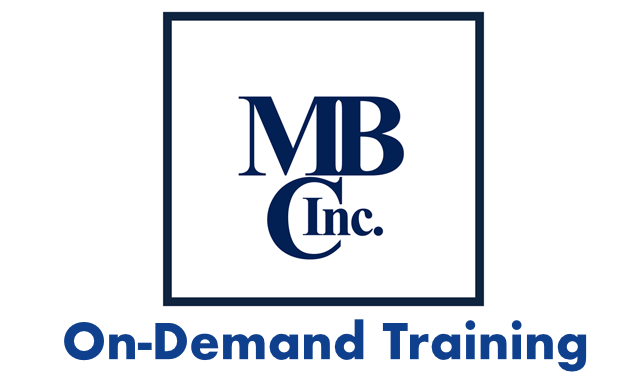Martin Business Consulting, Inc. Consulting-Training-Auditing-Coaching-Support
MBC, Inc. Newsletter Topics on “Leadership”
As Inspired by “The Leadership Secrets of Colin Powell”
Promote a Diversity of Ideas.
How many leaders or bosses have you worked for or had access to over the course of your career have said, “My door is always open”? But, you and everyone else knew you better not go through that door with a problem, complaint, or idea that was contrary to the bosses or leaders idea or method of operation. We’ve probable all had that experience.
So what is needed to promote the title “Promote a Diversity of Ideas“? To promote a diversity of ideas the leader must have open channels of communication with subordinates, peers, customers, suppliers and higher ups.
If communication is the key, then trust is the requirement. I must trust that you will listen to me. I must trust that you will try to understand  me. I must trust that you will act on what I have to say or present. I must trust YOU! You can’t have open-communication without trust and you can’t have honest-dialog without trust. These few words seem to narrow the requirements, but these few words certainly don’t simplify the problem of creating the trust needed, or the open channels needed, etc. open channels translates to “accessibility”.
me. I must trust that you will act on what I have to say or present. I must trust YOU! You can’t have open-communication without trust and you can’t have honest-dialog without trust. These few words seem to narrow the requirements, but these few words certainly don’t simplify the problem of creating the trust needed, or the open channels needed, etc. open channels translates to “accessibility”.
General Powell speaks often and in many forums about the development of; trust, access, support and the response of leaders.
There are two primary barriers to the trust needed to promote a diversity of ideas. The actual barriers and the psychological barriers, the actual are easy to understand, these are barriers built by lack of trust, or the lack of accessibility, but the psychological barriers are more difficult to define.
In Oren Harari’s book “The Leadership Secrets of Colin Powell” he quotes General Powell “Parking yourself behind a massive desk is a very effective barrier to candid communications”. Powell said “in my long career if have encountered lots of little people hiding behind big desks.” The counter to this psychological barrier the General has talked about; remove yourself from your desk when you are having a private or semi-private meeting with a subordinate or peer. Move to an environment that is more conductive to openness and equal communication. Powell often utilized a small ante room with a round table and minimal distractions. (The round table took away the perceived “Head-of-the-table” position, making everyone equal or perceived equality”.)
Think about your position and approach to subordinates and peers. This takes an absolute honest approach of “self-examination and honesty-with-yourself”. Am I accessible? Do I have psychological barriers between me and my subordinates and peers? This examination is a valuable step in your personal development as an effective leader. Learning this skill of self-examination will benefit in the development or improvement of so many of the attributes of a great leader.
Why is it so important to have open channels of communication?
Why should I spend my valuable time self-assessing and developing my communication skills?
Why should I take the time and work in creating this environment of trust?
The benefit is not just communication. The benefit is IDEAS! The great leader inspires organizations and brings out the great ideas of scores or hundreds of minds. Often we hear leaders say “our people are our greatest resource”. Well is it true? Computer systems don’t have ideas, technology does not have ideas, balance sheets, P and L reports don’t have ideas, and the bottom line has never had an idea.
People, have ideas!
This is what the leader is about. Bring out the best ideas from all your people. This takes great effort and focus. It is easy to squelch ideas. It is hard work to foster ideas, or foster an environment that fosters ideas.
The leader at any level in the organization has the unique ability to provide an environment that fosters trust and open communication. An open communication climate that allows subordinates, peers and leaders the freedom to come forth with a feeling of trust that they will not be ridiculed, disciplined or ignored when they present their ideas.
As you develop this open environment of trust and support you will find the workforce bring forth all kinds of ideas. This doesn’t mean the leader must adopt every idea. This would be impossible and not every idea will be a good one. The leader must still have a mechanism to screen these ideas. As this process develops you will see a shift in the culture when people are bringing their ideas forward they will also bring an implementation plan. This is generally easy to accomplish with simple questions as people bring you ideas, problems and concerns.
Ask simple questions like; “How would you go about implementing this suggestion?” or “How would you go about solving this issue?” or “How would you develop an approach to solving this issue?” Simple questions that drive commitment and involvement in the organization’s path forward, when you involve people you grow people.
Another key to the success of this approach is to listen. Listen with all you might! Too often people that are presented new ideas or methods have an initial response of “that won’t work because of such-and-such”, or” we tried that and it didn’t work”, etc. Don’t be so fast to reject! The first questions should always be “How could we do this?” or “What would you suggest as first steps?” Even if this is something you tried in the past, perhaps a new approach or implementation plan would allow it to succeed this time.
Oren Harari gives us five of General Powell’s communication principles in his book, “The Leadership Secrets of Colin Powell”.
1. Maintain a real open door policy. The leader must encourage communication from all corners of the organization. Remember Colin Powell’s warning “When people stop coming to you with their problems, this indicates a failure of leadership.”
2. Develop a “noisy system.” Get everyone to participate in the information flow. Encourage a diversity of opinion and a clash of ideas. Involve everyone.
3. Use every means to encourage communication, and never let rank or hierarchy get in the way. Develop all the ideas especial those closest to the front-lines. Invite outsiders into the discussion. Don’t be afraid to share information with the appropriate subordinates, peers and leaders.
4. Use technology to improve communication. Harness new technologies to enhance communications from everyone in the organization. Create a climate where information flow over networks is seen as a resource not a threat.
5. Treat “Turf-wars” as the enemy of communication. Knock down barriers. Reward those who follow suit. Stop those who try to put the barriers back up again. Beat this drum endlessly “we are always better off being open and candid with each other, up and down the organization chart”.
There is still an open question unaddressed to this point. Accessibility, how do I accomplish that task? I wish I could give a cookie-cutter answer to that very basic question. I can’t. Every organization and business is so different, so unique that there can’t be a single answer. Creativity and unique thinking are needed for each situation. I would like to close with an example that worked in one circumstance for me in the past.
Many years ago in a co-leadership role in quality at a large (over 1600 employees) machining, manufacturing facility I had a unique opportunity to find a simple way of making myself accessible to the engineering staff, the management team, lab and inspection personnel, purchasing agents, human resources, design staff, material flow personnel and others.
Technology, yes – meetings, yes – telephone, yes – e-mail, yes; all these are and were tools to make me and other leaders accessible to those in the organization that needed to bring forward issues, ideas, problems, etc.
But, the greatest tool to afford accessibility to all those resources. I simply had lunch at my open desk with my co-leader everyday from about 11:15 till noon. Everyone soon learned we were both present, both available for a working lunch. There were not any subjects or topics that were off-limits. These times became very productive as an “open-communication” forum. Very simple, very effective!
I have used similar approaches at other times and in other situations and nearly always found, with some modification, that these “standard-times-of-accessibility” were a very good approach to this age old problem. The key for this situation and all the others that followed was trust. Everyone, subordinates, peers and higher-ups must know that you will “follow-up”, and every idea or suggestion is worth talking about. This gave me unvarnished and unfiltered information about how the organization was running. What was really going on day-to-day, hour-to-hour, etc?
There are two books that I recommend to everyone that is interested in understanding the principles of leadership.
1. The Leadership Secrets of Colin Powell by Oren Harari
2. The Powel Principles by Oren Harari
Please talk with your peers and see if they would benefit from this series. If you think they may, please send them to the web-site www.mbcincorp.com they may download the free white paper and be automatically signed up to receive all future articles and quality tips.
Thanks to All
Bill Martin – President
MBC, Inc.

